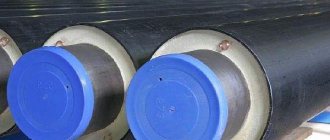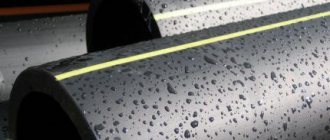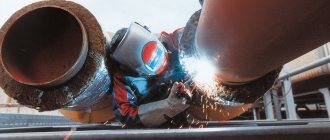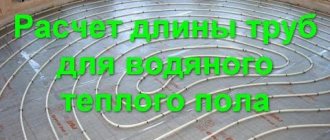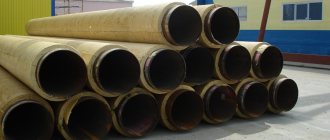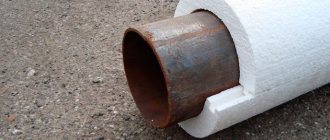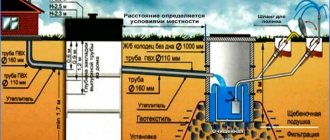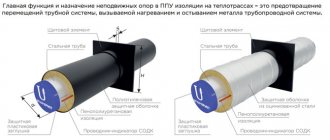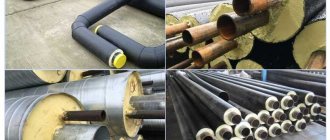Calculation procedure
Without performing calculations, it is impossible to select the optimal material or determine the appropriate thickness. Without this, it is impossible to determine what density the thermal insulation of equipment and pipelines will have. Among the factors influencing the final result of the calculations:
- conduction of heat.
- Ability to protect against deformation.
- Impacts of mechanical type.
- What is the temperature on the insulated surfaces.
- Vibration on equipment and the possibility of its occurrence.
- Temperature indicator in the environment.
- Permissible load limit.
One cannot do without taking into account the load that occurs when equipment or pipelines interact with the surrounding soil and vehicles that pass along the surface. Special formulas are used for any heat transfer systems, which can be stationary or non-stationary.
We present a series of formulas for independently calculating the thickness of thermal insulation.
The calculation for thermal insulation is artificially adapted to all operating conditions characteristic of a particular pipeline or equipment. The conditions themselves are formed with the participation of:
- Building materials to prepare for the changing seasons.
- Humidity, which accelerates heat transfer.
Professional companies provide performers with engineering data for future construction. Which specific requirements have the greatest impact on the selection of suitable insulation coatings?
- Thermal conductivity.
- Soundproofing.
- Ability to absorb or repel water.
- Vapor permeability level.
- Non-flammability.
- Density.
- Compressibility.
Calculation methods
In order to decide on the choice of suitable insulation, it is necessary to calculate the optimal thickness and density of the material for a particular case. This calculation allows not only to reduce heat loss, but also to reduce the temperature of the pipes, for the purpose of their safe use.
What factors need to be taken into account when calculating?
- Temperature of the insulated surface;
- Temperature changes in the environment;
- The presence of mechanical influences (for example, vibration, etc.);
- Permissible loads on pipes;
- Loads from overlying soil and vehicles;
- The thermal conductivity coefficient of the selected insulation;
- Resistance of the insulating material to deformation.
Pipeline insulation with mineral wool
Important! SNiP 41-03-2003 clearly states what the characteristics of insulation materials should be for various types of pipelines and operating conditions. For example, for insulated pipes with temperatures below 12º C, according to SNiP requirements, the thermal insulation must include a vapor barrier layer.
Now we will look at the calculation of pipeline thermal insulation - two proven methods, each of which is convenient and reliable in its own way.
Engineering calculation using formulas
The optimal thickness of the insulation layer is found by technical and economic calculation: the thickness of the material is determined based on its temperature resistance - at least 0.86 (ºC m²/W) for pipes with a diameter less than or equal to 25 mm, and 1.22 (ºC m²/W ) for pipes with a diameter greater than 25 mm.
The information below will be useful when carrying out engineering calculations of thermal insulation for various pipelines. As an example, we will calculate the required insulation thickness for the exhaust manifold of a high-performance diesel engine.
The total temperature resistance of the insulating structure for a cylindrical pipe is determined by the following formula:
Formula for finding the temperature resistance of insulation
- diz – outer diameter of the insulation for the pipe;
- dн – outer diameter of the pipe;
- from is the thermal conductivity coefficient of the insulating material;
- c – heat transfer coefficient from the insulation to the air.
Linear heat flux density:
Finding the linear heat flux density
- tн – temperature of the outer wall of the pipe;
- tiz is the surface temperature of the insulating layer.
Temperature of the inner wall of the pipe insulation:
Finding the temperature of the inner wall of the pipeline insulation
- dв – internal diameter of the pipe;
- g – heat transfer coefficient from the gas to the wall;
- t is the thermal conductivity coefficient of the material from which the pipe is made.
Formula for finding heat balance:
Finding Thermal Balance
With its help, the required outer diameter of the insulation for the pipe (diz) is determined. Then the calculation of the thickness of the thermal insulation of pipelines is calculated using the formula:
Finding the thickness of insulation
Calculation example: the task was set to calculate the thermal insulation for a high-performance diesel pipeline.
The following values are available:
- outer diameter of the pipeline – 0.6 m;
- its internal diameter is 0.594 m;
- temperature of the outer wall of the pipeline – 725 K;
- temperature of the outer surface of the insulation – 333 K;
- thermal conductivity coefficient of insulation is 0.11 W/(m K).
Substituting all the values into the formulas given above, we obtain the required insulation thickness for the pipeline - at least 0.1 m.
Advice! If you think that you will not be able to use the above formulas correctly, then contact our engineers for help. They will make a professional calculation, which will allow you to be sure that the thermal insulation will be of really high quality. The price for specialist services is quite reasonable and accessible to everyone.
If you nevertheless decide to do all the work yourself, then remember that the calculation of the thickness of the insulation for the pipeline should be carried out under specific conditions - from the insulation material to seasonal temperature changes outside and air humidity. By the way, humidity significantly accelerates heat transfer and reduces the effectiveness of some insulation materials (for example, mineral wool).
Online calculator – an indispensable assistant in thermal insulation calculations
In addition to the services of a qualified engineer, there is the option of using an online assistant. The calculator for calculating thermal insulation of pipelines is an absolutely free program that does not require installation or any payment. With its help, you can do it yourself and make an accurate calculation in a matter of minutes.
This is what the online assistant actually looks like
Using the calculator is quite simple.
First, you are asked to choose one of four tasks:
- insulation of the pipeline in order to ensure the specified temperature on the insulation surface;
- insulation of the pipeline in order to prevent freezing of the liquid contained in it;
- insulation of the pipeline to prevent moisture condensation on the insulation surface;
- insulation of the pipeline of a water heating network of two-pipe underground channel laying.
Next, you will be asked to enter some data necessary for the calculation:
- insulation material (in the proposed list you will certainly find the insulation you prefer);
- outer diameter of the pipeline (mm);
- temperature of the insulated surface (ºC);
- how long does it take before water freezes in a state of inertia;
- the presence of a protective coating (metallic or non-metallic);
- average temperature of the coolant (water, etc.).
Enter all the necessary parameters
Now all that remains is to press the “calculate” button and get the most accurate result.
The result will appear in approximately this form:
Thermal insulation of pipelines and its essence
By using thermal insulation, manufacturers make it easier for themselves to carry out certain technological processes. This solution is widely used in many industries:
- Metallurgical.
- Food.
- Oil refining.
- Chemical.
But insulation receives more attention from energy representatives. In this case, the thermal insulation objects have the form:
- Smoke pipes.
- Heat exchange devices.
- Accumulator tanks where hot water is stored.
- Turbines with gas and steam.
Thermal insulation of pipelines is used on devices that are located in both vertical and horizontal planes. This is a current solution for thermal insulation of equipment, such as tanks in which water is stored along with coolants. A number of stringent requirements are imposed on the effectiveness of insulating coatings.
Installation of insulation
Calculation of the amount of insulation largely depends on the method of its application. This depends on the place of application - for the internal or external insulating layer. You can do it yourself or use a calculator program to calculate the thermal insulation of pipelines. Coating on the outer surface is used for water pipelines for hot water supply at high temperatures to protect it from corrosion. Calculation with this method comes down to determining the area of the outer surface of the water supply system to determine the need per linear meter of pipe.
Internal insulation is used for water main pipes. Its main purpose is to protect metal from corrosion. It is used in the form of special varnishes or a cement-sand composition with a layer several mm thick. The choice of material depends on the installation method - channel or non-channel. In the first case, concrete trays are placed at the bottom of an open trench for placement. The resulting gutters are closed with concrete covers, after which the channel is filled with previously excavated soil. Channelless laying is used when digging a heating main is not possible.
This requires special engineering equipment. Calculating the volume of thermal insulation of pipelines in online calculators is a fairly accurate tool that allows you to calculate the amount of materials without fiddling with complex formulas. Material consumption rates are given in the relevant SNiP. Published: December 29, 2017 (4 ratings, average: 5.00 out of 5) Loading…
- Date: 04/15/2015 Comments: Rating: 26
Correctly calculated pipeline thermal insulation can significantly increase the service life of pipes and reduce their heat loss. However, in order not to make mistakes in calculations, it is important to take into account even minor nuances. Thermal insulation of pipelines prevents the formation of condensate, reduces the heat exchange of pipes with the environment, and ensures the operability of communications.
When repairing the coating, you should choose the same material that was used before. If for some reason it does not meet the requirements, then the entire insulation should be replaced so that there is no heat loss and no areas susceptible to corrosion arise. The result is a “pipe-in-pipe” gasket. The work process is simple, even a beginner can handle it. Polyurethane foam is applied in liquid form to the surface, after which it hardens, forming a durable and strong shell.
If for some reason it does not meet the requirements, then the entire insulation should be replaced so that there is no heat loss and no areas susceptible to corrosion arise.
Automated calculation of the volume of insulation of round surfaces, such as pipes, air ducts and pipelines, by outer diameter. The calculator calculates the volume of insulation in cubic meters, as well as the insulation area in square meters. According to the technical part of the collection FER26:2. Rules for calculating the volume of work 2.1 The volume of insulation “in use” (Oi) m3 per 1 m of length of pipelines or cylindrical equipment is calculated using the formula: Oi = 3.14 × (D + T) × T, where T is the thickness of the insulating layer, m; D - outer diameter of the pipeline or equipment, m.2.2. Length of insulated pipelines, as well as equipment of cylindrical and rectangular sections, etc.
determined along the center line for each section, and fittings and flanges, fittings, etc. are not excluded from the length.2.3. The perimeter of a polygonal and similar section is determined as the arithmetic mean of the perimeters of the internal and external surfaces of the insulation.2.4. The volume of insulation of individual places near instrumentation and fittings, as well as near all kinds of hatches, fittings, openings on equipment is taken into account in the prices, while the length of the insulated pipelines is measured without deducting the specified places. To obtain the result, enter the values in the form fields. Did you like the calculator? Share with your friends
Find the angle ABC of an isosceles trapezoid ABCD if the diagonal AC forms with the base AD and * Trapezium Mathematics / Russian language 9th grade.
Why can't you save on insulation?
The main communications, constructed independently, are often assembled from pipes with a high thermal conductivity coefficient. Such materials give off heat quite easily, readily accepting the temperature of the external environment. This operation corrects this behavior of the pipes. Pipeline insulation technology requires detailed consideration, since this stage cannot be skipped. Otherwise, the owners will subsequently face very unpleasant facts.
- DHW pipelines. An uninsulated system will cause a serious drop in water temperature. The consequence will be inconvenience in using the networks and high costs arising from the need for additional water heating. In addition, the lower temperature will turn the liquid into an ideal environment for the growth of bacteria in autonomous systems, where the water is not protected from microorganisms by “improvers”.
- Cold water supply systems. Heating cool water in summer is the first thing thermal insulation protects against. The appearance of condensation threatens metal pipelines, which become damaged due to contact with liquid, which means that a leak may occur in the system at any time. Freezing water often causes burst pipes.
- Gravity sewerage. In this case, insulation is usually not required. However, there is an exception: these are systems laid shallowly, with a slight slope. If the sewer system is long or has many turns, the risk only increases. Such pipelines are always at risk of traffic jams and blockages.
- Heat generators in the boiler room. If you neglect the insulation of the device piping, you may encounter significant heat losses. In addition, there is always a risk of burns for owners.
Thus, thermal insulation solves two main problems: it prevents emergency situations and makes it possible to reduce the cost of energy used to heat the coolant. Therefore, no one will dispute the need for this operation. Pipe protection is an integral undertaking. It allows you not only to increase the efficiency of systems, but also to avoid unplanned expenses for repairs that will require time and effort. In addition to the two main tasks, there is also a function that thermal insulation can perform. Sometimes it is organized to reduce the noise of the system.
Calculation of pipeline insulation materials
It is not difficult to carry out insulation calculations for pipelines; for convenience, it is recommended to use special calculators.
There are a number of actions that allow you to preliminarily determine the volume of materials. Before starting calculations, you should immediately decide what type of insulation will be used. Insulators differ not only in appearance, but also in installation conditions and properties. Painting agents can be used to insulate pipelines. The quality of the materials is high, the layer is thin but durable, fully performing all functions. The calculation is done as follows:
The formula for calculating the area of the cylinder is S=2πr(h+r), where r is the radius of the base of the pipe, h is the pipe length parameter, π is a constant, the approximate value for this case is 3.14. The resulting value is the coloring area. Next, according to the manufacturer’s instructions, determine the material consumption. Thermal insulation calculation diagram for a pipe. When using conventional insulating materials, calculations are much simpler. It is necessary to determine the volume for the inside and outside of the pipe. To do this, use the formula V=πr2h, where:
- V – pipeline volume; r – radius value (external or internal); h – pipe length; π is equal to 3.14.
The value of the internal and external radius is calculated separately, the resulting difference will be equal to the volume of the entire pipeline insulation material. Wrapping is an option for external insulation. In this case, the calculation is performed similarly using the first formula indicated, but it is necessary to take into account the thickness of the material, since it affects the quantity.
Glass wool, mineral wool
Insulating materials proven by practice. Meet the requirements of SP 61.13330.2012, SNiP 41-03-2003 and fire safety standards for any installation method. They are fibers with a diameter of 3-15 microns, close to crystals in structure.
Glass wool is made from waste from glass production, mineral wool from silicon-containing slag and silicate waste from metallurgy. The differences in their properties are insignificant. Available in the form of rolls, stitched mats, plates and pressed cylinders.
Installation
The pipe is wrapped or lined with cotton wool, ensuring uniform filling density over the entire surface. Then the insulation, without too much pressure, is fixed using a knitting wire. The material is hygroscopic and easily gets wet, so insulation of external pipelines made of mineral or glass wool requires the installation of a vapor barrier layer made of a material with low vapor permeability: roofing felt or polyethylene film.
A covering layer is placed on top of it to prevent the penetration of precipitation - a casing made of roofing tin, galvanized iron or sheet aluminum.
Is it necessary to insulate pipes in the basement of a house?
Is it necessary to insulate polypropylene pipes in the basement? If you did not insulate the strip foundation during construction. then it is simply necessary to protect communications from heat loss. If a country house is rarely used in winter, then communications may freeze, regardless of what material is used for the water supply pipe - metal-plastic, HDPE pipe or galvanized steel.
When a cold water pipe enters a warm room, condensation will always form on it. If the pipe is insulated, you will protect the room from possible dampness. Heating pipes in the basement also need thermal insulation so as not to waste excess heat in this room, but to redirect it as much as possible to the living quarters, reducing your heating costs.
Types of insulation materials
Thermal insulation of heating pipes is carried out after purchasing the material, but before this moment it is necessary to learn about the characteristics and advantages of the insulation, as well as its scope. After this data, you will be able to select the most suitable and effective option.
Polyurethane foam
This insulation consists of ribs and walls that form a solid solid structure. It creates a heat-insulating shell that has a high level of strength, while quite effectively retaining heat inside the heating network. Polyurethane foam has the following positive qualities:
- odorless and non-toxic;
- does not rot;
- it is environmentally harmless to the human body;
- has excellent dielectric properties;
- the material is resistant to various types of climatic influences, favorably suitable for outdoor use;
- sufficiently strong insulation, eliminating the possibility of pipeline breakdowns under the influence of mechanical loads from the outside.
Its only noticeable drawback is its high cost.
Minvata
Possessing a significant level of efficiency, it is quite popular among heat insulators. It consists of mineral wool and has a number of its own features:
- cotton wool has low moisture absorption due to treatment with special compounds during the manufacturing process;
- high degree of thermal stability, which, when heated, ensures the preservation of thermal insulation and mechanical parameters at the primary level;
- is environmentally friendly and does not contain toxic substances;
- it is not afraid of exposure to acids, solvents and other chemical solutions.
Mineral wool is excellent for use as a heat insulator for heating pipes. It is quite often installed on pipelines that are subject to continuous heating of great force.
Foamed polyethylene
Does not harm the human body. It is not afraid of significant temperature changes and is resistant to moisture. The insulation is quite popular among buyers. It has the shape of a tube with a specific thickness in which an incision is made. It is used as a heat-insulating material for heating network pipes, and also for insulating warm and cold water pipes.
It retains its properties when used together with other building materials, including concrete, lime and others.
Penofol
This insulation for heating pipes has appeared on the market quite recently, being a reflective heat insulator, which consists of aluminum foil and cellular polyethylene. Thanks to 2 layers, the material has excellent thermal performance, which is why it is quite in demand among buyers. Folgoizol has a number of features:
- fairly easy installation that does not require special protective equipment;
- it is environmentally friendly and does not emit toxic substances;
- has a long service life;
- has a wide range of uses, suitable for both indoor and outdoor use.
Penofol is distributed in rolls with varying levels of density of the polyethylene layer. When choosing thickness, you should take into account the future conditions of use of the heat insulator. The double layer helps retain heat in a closed space, achieving the maximum permissible efficiency.
Features of calculation using formulas
The required thickness of the insulating material is calculated using the technical and economic method. In this case, the thickness indicator depends on the level of resistance to temperature values: from 0.86 ºC m² per watt, if the diameter of the pipes is less than twenty-five millimeters, from 1.22 ºC m² per watt when the pipe cross-section is over twenty-five millimeters. In order to calculate thermal insulation using formulas, it is necessary to calculate the following parameters: 1. outer section of the pipeline. 2. internal section of the pipeline. 3. temperature indicator of the wall outside the pipe. 4. indicator of the temperature of the upper surface of the insulating material. 5. value of the thermal conductivity coefficient of the insulating material .Attention! These values must be substituted into engineering formulas to obtain the thickness of the material for insulation. For a more accurate calculation, it is better to seek the help of professionals who will make calculations so that the thermal insulation performs its functions at a high level. When calculating the thickness yourself, you should take into account certain operating conditions: type of insulation , air humidity level, as well as seasonal temperature changes in the environment. Attention! It is necessary to take into account the humidity level of the environment, because at high humidity the heat transfer process accelerates, while the level of efficiency of the insulation decreases. For example, high humidity negatively affects mineral wool insulation.
Channel laying is most often in demand. For this purpose, special channels are preliminarily arranged, and the routes are placed in them. The channelless installation method is less commonly used, since the work requires special equipment and experience. The method is used in cases when it is not possible to carry out trenching work. The main requirements for the materials from which pipe insulation is made are low thermal conductivity and good stability to the fire.
Internal laying is used for plumbing. The main reason for pipeline freezing is insufficient energy circulation speed. In this case, at sub-zero air temperatures, the process of crystallization of the liquid may begin. So high-quality thermal insulation of pipes is vital. Fortunately, our generation is incredibly lucky. In the recent past, insulation of pipelines was carried out using only one technology, since there was only one insulation - glass wool. Modern manufacturers of thermal insulation materials simply offer the widest selection of insulation for pipes, differing in composition, characteristics and method of application. It is not entirely correct to compare them with each other, much less to say that one of them is the best. Therefore, let's just look at the types of insulating materials for pipes. By area of application:
- for cold and hot water supply pipelines, steam pipelines for central heating systems, various technical equipment;
- for sewer and drainage systems;
- for pipes of ventilation systems and freezing equipment.
In appearance, which, in principle, immediately explains the technology for using insulation:
- roll;
- leafy;
- casing;
- filling;
- combined (this rather refers to the method of pipeline insulation).
The main requirements for the materials from which pipe insulation is made are low thermal conductivity and good fire resistance. The following materials meet these important criteria: Mineral wool. Most often sold in roll form. Suitable for insulating pipelines with high temperature coolant. However, if you use mineral wool to insulate pipes in large volumes, then this option will not be very profitable in terms of economy. Thermal insulation using mineral wool is produced by the winding method, followed by its fastening with synthetic twine or stainless wire.
The photo shows a pipeline insulated with mineral wool
It can be used at both low and high temperatures. Suitable for steel, metal-plastic and other polymer pipes. Another positive feature is that polystyrene foam has a cylindrical shape, and its internal diameter can be adjusted to the size of any pipe. Penoizol. According to its characteristics, it is closely related to the previous material. However, the method of installing penoizol is completely different - its application requires a special spraying installation, since it is a component liquid mixture. After the penoizol hardens, a sealed shell is formed around the pipe, almost impervious to heat. Another advantage here is the lack of additional fastening.
Penoizol in action
Foiled penofol. The latest development in the field of insulation materials, but it has already won its fans among Russian citizens. Penofol consists of polished aluminum foil and a layer of foamed polyethylene.
This two-layer design not only retains heat, but even acts as a kind of heater! As you know, foil has heat-reflecting properties, which allows it to accumulate and reflect heat to the insulated surface (in our case, a pipeline). In addition, foil penofol is environmentally friendly, low-flammable, resistant to temperature changes and high humidity. As you can see, there are plenty of materials! There is plenty to choose from to insulate pipes. But when choosing, do not forget to take into account the characteristics of the environment, the characteristics of the insulation and its ease of installation. Well, it wouldn’t hurt to calculate the thermal insulation of the pipes in order to do everything correctly and reliably.
Thermal calculation of the heating network
For thermal calculation we will take the following data:
· water temperature in the supply pipeline is 85 ° C;
· water temperature in the return pipeline is 65 °C;
· average air temperature during the heating period of the Republic of Moldova +0.6 °C;
Let's calculate the losses of uninsulated pipelines. An approximate determination of heat losses per 1 m of an uninsulated pipeline, depending on the temperature difference between the pipeline wall and the surrounding air, can be made using a nomogram. The heat loss value determined from the nomogram is multiplied by correction factors:
where: a
— correction factor taking into account the temperature difference,
a
= 0.91;
b
— radiation correction, for
d
=45 mm and
d
=76 mm
b
=1.07, and for
d
=133 mm
b
=1.08;
l
— pipeline length, m.
Heat losses of 1 m of uninsulated pipeline, determined according to the nomogram:
for d
=133 mm
Q nom
=500 W/m;
for d
=76 mm
Q nom
=350 W/m;
for d
=45 mm
Q nom
=250 W/m.
Considering that there will be heat losses on both the supply and return pipelines, the heat losses must be multiplied by 2:
kW
For heat loss from suspension supports, etc. 10% is added to the heat loss of the uninsulated pipeline itself.
kW
Standard values of average annual heat losses for a heating network when laid above ground are determined by the following formulas:
where: , - standard average annual heat losses, respectively, of the supply and return pipelines of the above-ground installation sections, W;
, - standard values of specific heat losses of two-pipe water heating networks, respectively, of the supply and return pipelines for each pipe diameter for above-ground installation, W/m, determined by ;
l
— length of a section of a heating network characterized by the same diameter of pipelines and type of installation, m;
— local heat loss coefficient, taking into account the heat losses of fittings, supports and compensators. The value of the coefficient in accordance with is taken for above-ground installation as 1.25.
The calculation of heat loss of insulated water pipelines is summarized in Table 3.4.
Table 3.4 - Calculation of heat loss of insulated water pipelines
| dн, mm | , W/m | , W/m | l, m | ,W | ,W |
| 133 | 59 | 49 | 92 | 6,79 | 5,64 |
| 76 | 41 | 32 | 326 | 16,71 | 13,04 |
| 49 | 32 | 23 | 101 | 4,04 | 2,9 |
The average annual heat loss of the isolated heating network will be 49.12 kW/an.
To evaluate the effectiveness of an insulating structure, an indicator called the insulation efficiency coefficient is often used:
where Q g
, Q and
are the heat losses of uninsulated and insulated pipes, W.
Insulation efficiency factor:
5.4. Calculation of the insulation thickness that prevents moisture from condensing from the air on its surface
This calculation is made for isolated objects located in enclosed spaces and containing substances with a temperature below the ambient temperature.
In this case, the insulation must provide the required calculated difference between the outside air temperatures and the insulation surface ( t n
-
t p
), which eliminates condensation of moisture from the air (table).
Table 4
Estimated difference ( t n
- t p ), °C
| tн, °С | Relative air humidity р, % | |||||
| 40 | 50 | 60 | 70 | 80 | 90 | |
| 10 | 13,4 | 10,4 | 7,8 | 5,5 | 3,5 | 1,6 |
| 15 | 14,2 | 10,9 | 9,1 | 5,7 | 3,6 | 1,7 |
| 20 | 14,8 | 11,3 | 8,4 | 5,9 | 3,7 | 1,8 |
| 25 | 15,3 | 11,7 | 8,7 | 6,1 | 3,8 | 1,9 |
| 30 | 15,9 | 12,2 | 9,0 | 6,3 | 4,0 | 2,0 |
Required insulation thickness d
, m, for flat structures is determined by the formula:
(23)
and for cylindrical ones - based on the method of successive approximations.
The design equation in this case will look like:
(24)
Given the initial value of the insulation thickness d 0
, m, determined by the required calculation accuracy, for example, 0.001 m, using successive steps: 1, 2, 3 ...
i
for insulation thicknesses:
d 1
=
d 0
×1;
d2
=
d0
×
2 ; ; d 3
=
d 0
×3 …
d i
=
d 0
×
i
we calculate the quantities:
; ... according to equation ().
At each computation step i
comparison is made with the specified value, table. .
When the condition is met:
— ³ 0 (25)
the calculations end, and the found value d i
=
d 0
×
i
is, with an accuracy of 1 mm, specified, ensuring the absence of condensation.
When calculating the insulation thickness based on a given temperature difference ( t n
—
t p
) the following design environmental parameters are accepted:
— temperature of the internal environment t in
and relative air humidity
j
- according to the design specifications;
— external temperature t n
, equal to the room temperature;
— heat transfer coefficient a
on the outer surface of the insulation of an object located indoors and outdoors, with a cover layer with a low emissivity (see notes to the table) - 4 W/m2×°C, with a large one - 7 W/m2×°C.
How to insulate pipes in the basement with your own hands
You should think in advance about how and with what to insulate pipes in the basement of a private house, how to insulate a columnar foundation, and what thermal insulation material to use for various materials. Requirements for the materials used should take into account the ease of installation of insulation, long service life, water-repellent characteristics, environmental and fire safety of the material.
You should not have any difficulties in your work; anyone can handle this issue. No special skills or special tools are required to insulate pipes in the basement. Read the video instructions at the end of the article on this topic, and you will understand the stages of sewer insulation. The main thing is to be careful when performing all repair work.
Types of insulation
Let's consider the most popular and frequently used materials for thermal insulation:
- Fiberglass. Glass fiber materials are often used for above-ground piping because they have a long service life. Fiberglass has a low application temperature and is characterized by low density. High-quality fiberglass has high vibration, chemical and biological resistance.
- Mineral wool. Insulation of pipelines with mineral wool is a very effective heat insulator. This insulating material is used in different conditions. Unlike fiberglass, which has a low application temperature (up to 180ºC), mineral wool can withstand temperatures up to 650ºC. At the same time, its heat-insulating and mechanical properties are preserved. Mineral wool does not lose its shape and is highly resistant to chemicals and acid. This material is non-toxic and has a low degree of moisture absorption.
In turn, mineral wool comes in two forms: stone and glass.
- Polyurethane foam has a wide range of applications, but is a fairly expensive material. According to SNiP standards, thermal insulation of pipelines is environmentally friendly and does not affect human health. Polyurethane foam is resistant to external factors, non-toxic and quite durable.
- Expanded polystyrene. In some areas of industry, foam plastic is an indispensable material, as it has low thermal conductivity and moisture absorption and a long service life. Expanded polystyrene is difficult to ignite and is an excellent sound insulator.
- In addition to the above materials, pipeline insulation can be carried out using other less well-known, but no less practical insulation materials, such as foam glass and penoizol. These materials are durable, safe and are close relatives of polystyrene foam.
Thermal insulating paint can also provide protection against corrosion and high thermal insulation of pipes.
Choosing insulation
The main reason for pipeline freezing is insufficient energy circulation speed. In this case, at sub-zero air temperatures, the process of crystallization of the liquid may begin. So high-quality thermal insulation of pipes is vital.
Attention! This is especially true for those pipelines that operate intermittently (for example, a water heating system in a country house). Therefore, in order to avoid having to defrost and restore the system, you need to take care of its thermal insulation in advance.
Fortunately, our generation is incredibly lucky. In the recent past, insulation of pipelines was carried out using only one technology, since there was only one insulation - glass wool. Modern manufacturers of thermal insulation materials simply offer the widest selection of insulation for pipes, differing in composition, characteristics and method of application. It is not entirely correct to compare them with each other, much less to say that one of them is the best. Therefore, let's just look at the types of insulating materials for pipes. By area of application:
- for cold and hot water supply pipelines, steam pipelines for central heating systems, various technical equipment;
- for sewer and drainage systems;
- for pipes of ventilation systems and freezing equipment.
In appearance, which, in principle, immediately explains the technology for using insulation:
- roll;
- leafy;
- casing;
- filling;
- combined (this rather refers to the method of pipeline insulation).
The main requirements for the materials from which pipe insulation is made are low thermal conductivity and good fire resistance. The following materials meet these important criteria:
- Mineral wool . Most often sold in roll form. Suitable for insulating pipelines with high temperature coolant. However, if you use mineral wool to insulate pipes in large volumes, then this option will not be very profitable in terms of economy. Thermal insulation using mineral wool is produced by the winding method, followed by its fastening with synthetic twine or stainless wire.
The photo shows a pipeline insulated with mineral wool
Note! This type of insulation must additionally be covered with a layer of waterproofing material.
- Expanded polystyrene . People called him “the shell.” This insulation successfully combines quality, all the necessary properties and ease of installation. Fire resistance, low thermal conductivity and low moisture absorption make polystyrene foam an indispensable material for insulating water supply and heating pipes.
It can be used at both low and high temperatures. Suitable for steel, metal-plastic and other polymer pipes. Another positive feature is that polystyrene foam has a cylindrical shape, and its internal diameter can be adjusted to the size of any pipe.
- Penoizol . According to its characteristics, it is closely related to the previous material. However, the method of installing penoizol is completely different - its application requires a special spraying installation, since it is a component liquid mixture. After the penoizol hardens, a sealed shell is formed around the pipe, almost impervious to heat. Another advantage here is the lack of additional fastening.
- Foamed polyethylene . A fairly common insulation material that can most often be found on water supply lines. It is notable for its ease of installation: we cut a strip of the required length, wrapped it around the pipe, and secured it with tape. Moreover, today foamed polyethylene is produced in the form of pipes cut on one side - you just need to put it on and that’s it.
Penoizol in action
Attention! It is worth noting that penoizol is far from a cheap material for insulating pipelines.
- Foil penofol . The latest development in the field of insulation materials, but it has already won its fans among Russian citizens. Penofol consists of polished aluminum foil and a layer of foamed polyethylene.
This two-layer design not only retains heat, but even acts as a kind of heater! As is known, foil has heat-reflecting properties, which allows it to accumulate and reflect heat to the insulated surface (in our case, a pipeline). In addition, foil penofol is environmentally friendly, low-flammable, resistant to temperature changes and high humidity.
For your information! If you plan to thermally insulate a pipeline, then know that for all types of insulation (except foam insulation) you only need a waterproofing layer and tape.
As you can see, there are plenty of materials! There is plenty to choose from to insulate pipes. But when choosing, do not forget to take into account the characteristics of the environment, the characteristics of the insulation and its ease of installation. Well, it wouldn’t hurt to calculate the thermal insulation of the pipes in order to do everything correctly and reliably.
3.by clicking on the “calculate” button, you receive accurate calculation data. 2.for sewerage pipes, as well as drainage pipes.
The main reason for pipe freezing is considered to be the low speed of the transported energy carrier.
Calculation of pipeline thermal insulation: types of pipeline insulation. Water supply networks require coating with thermal insulation materials so that in winter the liquid in the pipes does not freeze and does not form plugs. You can calculate the thermal insulation of pipelines using special formulas, or using an online calculator. What calculation methods exist. To choose the optimal insulation option, you need to calculate the thickness of the material and calculate its density in a certain situation. A correctly performed calculation will minimize heat loss and reduce the temperature of the pipes themselves in order to use them safely.

